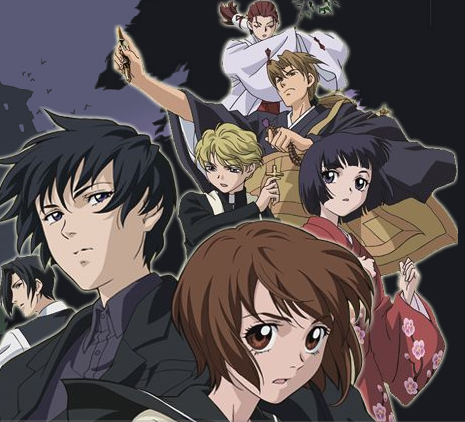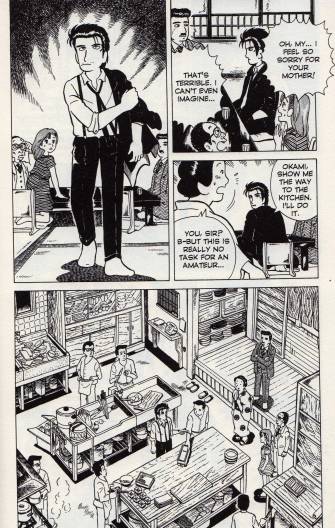 What up anidorks? It’s a two-for-one day here at OPL: a double barreled blast of Japanese horror, anime-style. First, Ghost Hunt…..
What up anidorks? It’s a two-for-one day here at OPL: a double barreled blast of Japanese horror, anime-style. First, Ghost Hunt…..A costly accident forces high school freshman Mai into taking a part-time job…but rather than flip burgers, Mai ends up at working at SPR, a paranormal investigation agency run by Naru, a mysterious young man not much older than Mai. Naturally, the spunky, outspoken Mai and the cold and narcissistic Naru butt heads, but their animosity is tempered by the weird and eerie hauntings they’re hired to investigate.
Ghost Hunt takes a unique turn for Japanese horror, being less interested on atmosphere and more on the actual science and technology of paranormal investigation; it’s closer to a police procedural or detective case than a ghost story. Aside from the storyline involving (spoiler alert!) Mai’s latent psychic abilities, its light on over-arching plot and more focused on episodic investigations, and at times it feels a bit flimsy and formulaic; it may just be the case that the episodic format of manga doesn’t always translate well to the anime medium. Character development is a bit insubstantial as well – Mai and Naru are sorta cardboard, and the supporting cast is a bit cliché (wholesome young catholic priest, sassy Shinto priestess, goofy Buddhist monk, etc). Nevertheless, Ghost Hunt takes the standard ghost story format and injects a welcome scientific/real world element. Dubbing, subtitling, and packaging are up to the usual fine FUNamation standard. Nothing earth-shattering here, but it’s a pleasing series for younger otaku and a pleasant enough diversion for older ones.
 Ghost Hound, on the other hand, is a keeper. Haunted by strange, nonsensical memories of his childhood kidnapping and older sister’s death, shy middle schooler Tarou has begun to realize his strange dreams are not dreams at all – they’re out of body experiences. When he finds out two of his schoolmates (cocky rich kid Masayuki and sullen delinquent Makoto) both share similar traumatic pasts and the same out of body experiences, the three begin to explore the strange dimensional rift between the world of the living and world of the dead. It soon becomes clear to the three boys that strange forces are at play in their small town, and that a mysterious old hospital, a clandestine bio-tech corporation, the relationship between Makoto’s parents, and the daughter of a local Shinto priest may all hold the key to Tarou’s bizarre memories - and the explanation for his beloved sister’s death. It’s a puzzle the boys must solve quickly, as the gate to the world of the dead is beginning to open….
Ghost Hound, on the other hand, is a keeper. Haunted by strange, nonsensical memories of his childhood kidnapping and older sister’s death, shy middle schooler Tarou has begun to realize his strange dreams are not dreams at all – they’re out of body experiences. When he finds out two of his schoolmates (cocky rich kid Masayuki and sullen delinquent Makoto) both share similar traumatic pasts and the same out of body experiences, the three begin to explore the strange dimensional rift between the world of the living and world of the dead. It soon becomes clear to the three boys that strange forces are at play in their small town, and that a mysterious old hospital, a clandestine bio-tech corporation, the relationship between Makoto’s parents, and the daughter of a local Shinto priest may all hold the key to Tarou’s bizarre memories - and the explanation for his beloved sister’s death. It’s a puzzle the boys must solve quickly, as the gate to the world of the dead is beginning to open….












